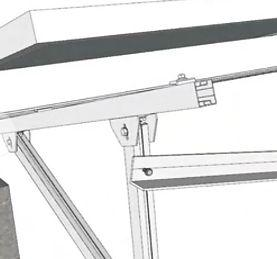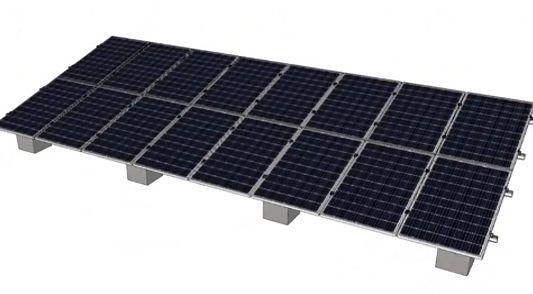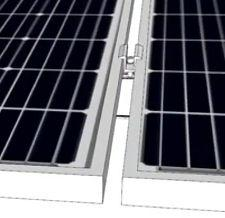As the solar energy industry continues to expand rapidly, the technology and design of solar panel mounts—commonly referred to as solar brackets—have evolved significantly. In 2025, solar panel mounting systems have become more versatile, durable, and efficient, catering to diverse roof types and ground installations worldwide. Whether you are a homeowner, installer, or solar project developer, understanding the latest trends, types, and best practices for solar panel mounts is essential to maximize your solar investment.
This guide will walk you through everything you need to know about solar panel mounts in 2025, including types of mounts, materials, installation methods, cost considerations, and innovations shaping the industry. We will also provide a detailed comparison table to help you select the optimal mounting solution for your solar project.
- Introduction to Solar Panel Mounts
- Types of Solar Panel Mounts
- Roof Mounts
- Ground Mounts
- Pole Mounts
- Materials Used in Solar Brackets
- Installation Techniques and Best Practices
- Factors to Consider When Choosing Solar Mounts
- Cost Analysis and Budgeting
- Innovations and Trends in 2025
- Comparison Table of Popular Solar Mount Types
- Why Choose C-Channel Steel for Your Solar Brackets
- Conclusion


1. Introduction to Solar Panel Mounts
Solar panel mounts, or solar brackets, are the structural framework that securely holds solar panels in place. They ensure panels are positioned at the optimal angle and orientation to capture maximum sunlight, withstand environmental forces like wind and snow, and maintain system longevity.
The importance of a reliable mounting system cannot be overstated. Poorly designed or installed mounts can lead to panel damage, reduced energy output, and increased maintenance costs. Hence, selecting the right solar bracket is critical for any solar installation.
2. Types of Solar Panel Mounts
Solar panel mounts can be broadly categorized into three main types:
Roof Mounts
Roof mounts are the most common type of solar panel mounts, designed to attach solar panels directly to a building’s roof. They are ideal for residential and commercial rooftop solar systems.
- Flush Mounts: Panels are installed flat against the roof surface, typically at the same angle as the roof pitch. This is the most cost-effective and aesthetically pleasing option.
- Tilt Mounts: These mounts allow panels to be tilted at an angle different from the roof pitch, optimizing solar exposure especially on flat roofs.
- Ballasted Mounts: Used primarily on flat roofs, these mounts rely on weight (ballast) to hold panels in place without penetrating the roof membrane, reducing the risk of leaks.
Ground Mounts
Ground mounts are solar panel systems installed on the ground using racks or frames. They offer flexibility in panel orientation and tilt angle and are suitable for large-scale solar farms or properties with ample land.
- Standard Ground Mounts: Panels are mounted on fixed racks anchored into the ground.
- Pole Mounts: Panels are mounted on a single pole, which can be fixed or equipped with tracking systems.
- Tracking Systems: These mounts allow panels to follow the sun’s path throughout the day, increasing energy yield by up to 25-35%.
Pole Mounts
Pole mounts elevate solar panels on a single pole, often used in limited space scenarios or where ground mounting is not feasible. They can be fixed or equipped with single-axis or dual-axis tracking.
3. Materials Used in Solar Brackets
The choice of material for solar brackets affects durability, corrosion resistance, weight, and cost.
- Aluminum: Lightweight, corrosion-resistant, and easy to handle. Aluminum mounts are popular for residential and commercial applications.
- Stainless Steel: Offers superior strength and corrosion resistance, ideal for harsh environments but heavier and more expensive.
- Galvanized Steel: Steel coated with zinc to prevent rusting, offering a cost-effective balance between strength and durability.
- C-Channel Steel: A versatile and robust option, C-channel steel is widely used in solar mounting structures due to its strength, ease of fabrication, and cost efficiency. C-Channel Steel is especially favored in large-scale installations.
4. Installation Techniques and Best Practices
Proper installation ensures the safety, performance, and longevity of solar panel systems.
- Site Assessment: Evaluate roof type, orientation, shading, and structural integrity.
- Mounting Method Selection: Choose mounts compatible with roof materials (e.g., tile, metal, asphalt).
- Weatherproofing: Use flashing and sealants to prevent water intrusion at roof penetrations.
- Structural Engineering: Confirm that the mounting system can withstand local wind and snow loads.
- Ground Mount Foundations: Use concrete footings or ground screws for stability.
- Electrical Safety: Ensure proper grounding and bonding of mounts to prevent electrical hazards.


5. Factors to Consider When Choosing Solar Mounts
- Roof Type and Condition: Different mounts suit different roofs (e.g., tile vs. metal).
- Local Climate: Wind, snow, and corrosion resistance requirements vary by location.
- System Size: Larger systems may benefit from ground or pole mounts.
- Budget: Balance upfront cost with durability and maintenance.
- Aesthetics: Flush mounts are less visible, while tilt mounts may be more noticeable.
- Installation Complexity: Some mounts require specialized labor.
6. Cost Analysis and Budgeting
Solar mounting systems typically account for 10-15% of the total solar installation cost. For example, a $20,000 solar system may allocate $2,000-$3,000 for mounting hardware and installation.
| Cost Component | Typical Cost Range (USD) | Notes |
|---|---|---|
| Mounting Hardware | $500 – $2,000 | Depends on material and system size |
| Installation Labor | $1,000 – $3,000 | Varies by complexity and location |
| Engineering & Permits | $200 – $800 | Required for structural compliance |
| Maintenance (Annual) | $50 – $150 | Inspection and tightening mounts |
7. Innovations and Trends in 2025
- Smart Mounts: Integration of sensors to monitor tilt angle, wind load, and structural health.
- Lightweight Composites: Use of advanced materials to reduce weight without compromising strength.
- Tool-less Installation: Modular designs enabling faster, easier assembly.
- Hybrid Systems: Combining solar mounts with rainwater harvesting or green roofs.
- Sustainability: Increased use of recycled materials and environmentally friendly coatings.
8. Comparison Table of Popular Solar Mount Types
| Mount Type | Best For | Material Options | Installation Complexity | Cost Range (Per kW) | Advantages | Disadvantages |
|---|---|---|---|---|---|---|
| Flush Roof Mount | Sloped roofs (asphalt, tile) | Aluminum, Steel, C-Channel Steel | Low | $100 – $200 | Low profile, cost-effective | Limited tilt adjustment |
| Tilt Roof Mount | Flat roofs | Aluminum, Steel | Medium | $150 – $250 | Optimized angle, better output | Slightly higher cost |
| Ballasted Mount | Flat roofs (no roof penetrations) | Aluminum, Steel | Medium | $200 – $300 | No roof penetration, easy removal | Heavy due to ballast weights |
| Ground Mount | Large land areas | Steel, C-Channel Steel | Medium to High | $150 – $350 | Flexible orientation, scalable | Requires space, higher installation cost |
| Pole Mount | Limited space, tracking | Steel, Aluminum | High | $250 – $400 | Tracking increases yield | More complex, higher maintenance |
9. Why Choose C-Channel Steel for Your Solar Brackets
At C-Channel Steel, we specialize in providing high-quality, durable C-channel steel solar brackets designed for the evolving demands of solar installations in 2025. Our products offer:
- Superior Strength: Ideal for both ground and roof mounts, ensuring long-term stability.
- Corrosion Resistance: Treated with advanced coatings to withstand harsh environments.
- Customization: Tailored solutions to fit unique project requirements.
- Cost Efficiency: Competitive pricing without compromising quality.
- Ease of Installation: Engineered for quick assembly and secure mounting.
Choosing C-Channel Steel solar brackets means investing in reliability, performance, and peace of mind for your solar project.


10. Conclusion
Solar panel mounts are a vital component of any solar energy system. In 2025, the market offers a broad spectrum of mounting solutions tailored to different roof types, ground conditions, and project scales. Understanding the types, materials, costs, and installation best practices empowers you to make informed decisions that maximize your solar investment’s efficiency and durability.
Whether you opt for flush roof mounts, tilt mounts, ground mounts, or pole mounts, selecting high-quality solar brackets—such as those made from C-channel steel—ensures your solar panels remain secure and productive for decades.
If you are planning a solar installation, consider partnering with trusted manufacturers like C-Channel Steel to access premium mounting solutions tailored to your needs.